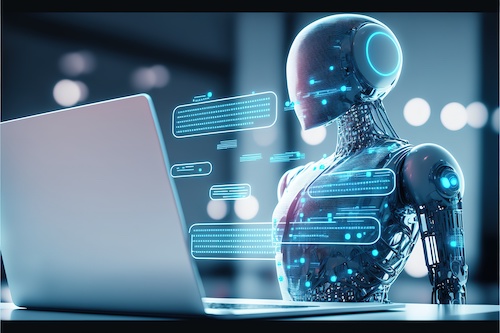Key points:
- Educators need more information on AI-powered tools, and they need it yesterday
- Administrators will be tasked with staying up to date on what’s happening in the world of AI–and with helping teachers become more comfortable with it
- See related article: 5 things to know about ChatGPT in education
As the ‘23-’24 school year comes into focus, there is now little doubt we are on the brink of a major technological revolution that will affect our schools, our jobs, and our lives in ways we can’t yet fathom. By now, you’ve likely seen countless variations of “The Robots are Coming” headlines from clever copywriters hunting for clicks. But when is this tidal wave of innovation going to hit, and how can we be ready when it does?
There are legitimate concerns about early-stage AI, including:
- Security and privacy
Of all the issues, this one feels like the easiest to address. In short, if you’re working with a large language model (LLM) like ChatGPT and want to stay compliant with student data privacy laws, simply do not input any identifiable information about your student. Ask questions to confirm that any AI-integrated apps are keeping prompts and identifying data separate. Assume anything that goes into your prompts can and will be seen by others.
- Bias and discrimination
There’s no getting around the fact that AI is biased. It’s biased because people are biased, the data it’s been trained on is biased, and its lack of nuance or self awareness means it has a hard time even identifying the possibility of bias.
The deeper problem is that nobody will ever agree on how much (if any) moderation should be present. Heck, we can’t even agree on how to define the concept of “bias” to begin with. This is a problem without an easy answer, but the long and short of it is that AI is not any more biased than any other medium we or our kids are exposed to in the modern world. If we sit around waiting for “unbiased AI,” we’ll be waiting a long, long time. The onus is on developers to account for and mitigate this risk whenever possible. It’s also on the adults in the room to help our children better understand the concept of bias and how it can influence the media we consume, not just within the realm of AI.
Latest posts by eSchool Media Contributors (see all)
- 4 ways admins can support teachers’ technology use - July 28, 2023
- Why AI’s flaws won’t slow its adoption - July 28, 2023
- The future of gamification - July 27, 2023

